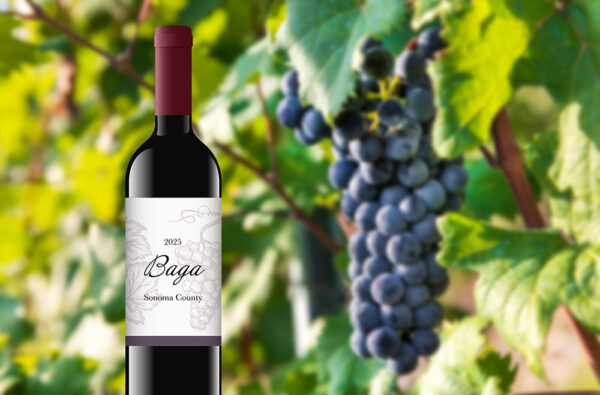American Viticultural Areas (AVA), TTB Agency Authority And Oversight
Geographic indications are an important part of building value in wine brands. Due to the value of geographic indication to both consumers and wine companies, the ability to use geographic indications is highly regulated. Specifically, the Federal Alcohol Administration Act (FAA Act) authorizes the United States Secretary of Treasury to promulgate regulations for the labeling of wine amongst other beverages. The primary goals of these regulations is to prohibit beverage companies from deceiving consumers through the use of misleading statements on labels as well as to provide consumers with important information as to the identity and quality of the labeled alcoholic product. Relevant to this article, the FAA Act regulates the establishment of American Viticultural Areas (AVA) and the use of AVA information on wine labels. The Alcohol and Tobacco Tax and Trade Bureau (TTB) administers the AVA regulations.
Understanding the AVA System
Per the TTB regulations, an AVA is “a defined grape-growing region having distinguishing features” which are described in 27 CFR part 9. The use of an AVA name on a label is important because it allows both vintners and consumers to attribute characteristics such as quality and reputation to wine made from grapes grown in a particular area of geographic origin. This means that the labeling of a particular AVA allows vintners to describe with specificity the origin of their wines to consumers, while also allowing consumers to geographically identify the wines that they purchase and consume.
This is all to say that the TTB regulates the AVA system, by which, companies are mandated to accurately identify the location that their wines are made and their grapes are grown. By regulating viticultural areas, these regulations allow vintners to better describe the origin of their wines and to allow consumers to better identify wines that they may purchase. An individual or entity, including any industry member, or any person or entity on behalf of an industry member, may file a petition to establish a new AVA or to modify an existing AVA.
Established AVAs (and Multi-State AVAs) in California and Oregon
Per the date of publishing, the TTB recognizes 146 established American Viticultural Areas in California. These established AVAs include the well-known Napa, Russian River Valley, Rutherford and Sonoma Valley AVAs. California the highest number of AVAs and does not share an AVA (a multi-state AVA) with a neighboring state.
Oregon has 19 established AVAs, including the famous Willamette Valley, Applegate Valley and Rogue Valley AVAs. In addition to these 19 AVAs, Oregon’s state boundaries also partially contain four (4) multi-state AVAs: Columbia Gorge (Oregon and Washington), Columbia Valley (Oregon and Washington), Snake River Valley (Oregon and Idaho), and Walla Walla Valley (Oregon and Washington).
Regulatory Requirements For a New AVA Petition
In order to petition for a new AVA, a petitioner must meet the following regulatory requirements for a new AVA petition:
- Name Evidence
- Name Usage
- Source of Name and Name Evidence
- Boundary Evidence
- Distinguishing Features
- Climate
- Geology
- Soils
- Physical Features
- Elevation
- Maps and Boundaries Description
- Maps
- Boundary Description
Importantly AVA petitioners must define a proposed AVA boundary based on identifiable features appearing on U.S.G.S. maps. There are no minimum or maximum size requirements for AVA’s and approved AVAs vary in size from less than one square mile to thousands of square miles. However, the total vineyard acreage must be sufficient to constitute both a “grape growing region” and “an area in which viticulture exists” (see 27 CFR 4.25 (e)(1)(i) and 27 CFR 9.12(a)(1)).
Interestingly, if a petitioner seeks to establish a new AVA that would be located within an existing AVA, the petition must include information that both identifies the attributes of the proposed AVA that are consistent with the existing AVA while also explaining how the proposed AVA is sufficiently distinct from the existing AVA to warrant recognition as a separate AVA. Any such petition should also document the geographical name recognition of the proposed AAVA and compare its relationship to that of the established AVA.
Timeline And Other Considerations To Establish A New AVA
The timeline to establish a new AVA is extremely variable and often takes multiple years to complete. The TTB will engage in a back and forth process with the petitioner in order to determine the propriety of the new AVA and whether all of the requirements have been met.
Once TTB receives a petition for the establishment of a new AVA, TTB will send written acknowledgement to the petitions within 30 days of receipt of the petition. From there, the TTB then performs an initial review of the petition to determine whether the petition contains all of the basic elements needed such as name and boundary evidence, information regarding distinguishing features, a boundary description, and U.S.G.S. maps. Once the petition is perfected, the TTB can decide whether or not to proceed with the rulemaking process.
Keep in mind that once established, there are limitations on the use of the AVA name. For example, 27 CFR part 4 prohibits reference on a wine label that suggests an origin other than the wine’s true origin. In order to use a wine label with an AVA name, or with a brand name that includes an AVA name, at least 85% of the wine must be derived from grapes grown in the area represented by that name.
When a new AVA is established, the text of the regulations will state the AVA’s entire name, and possibly a portion of the name standing alone, as a term or terms of viticultural significance.
Common issues that the TTB sees with evaluating a new AVA petition include:
- the appropriateness of the proposed name or boundary
- the absence of adequate distinguishing features
- the sufficiency of the data submitted with the petition
If any of these issues listed above, or other issues are flagged by the TTB, the TTB will return the petition to the petitioner and provide an opportunity to correct any deficiencies.
TTB Determination To Proceed With AVA Rulemaking
Once the TTB determines that there is sufficient evidence to proceed with the rule-making, the TTB drafts and releases a NPRM, which is a narrative document based on the information contained in the AVA petition, and invites public comment on the NPRM. Once approved by the TTB, the NPRM is signed by the TTB Administrator and published in the Federal Register. At the close of the 60 calendar day public comment period, the TTB reviews the petition in light of any comments which were received by the NPRM.
As you can see, the process to petition the TTB for a new AVA is both highly regulated and cumbersome. However, the value that geographic indications provide to consumers and wine brands is inescapable. Therefore, grape growers and wine producers must formulate and execute both domestic and internal strategies for the geographic indication of their wine while protecting against the deceptive use on wine labels which veer away from TTB’s requirements for labeling. This includes potentially petitioning the TTB for the initiation of rule-making for a new AVA, or to make a change to an existing AVA.
Please contact Rogoway Law Group, your California and Oregon Wine Industry Attorneys for a free consultation to discuss establishing an AVA or any other wine industry related legal needs or concerns.


